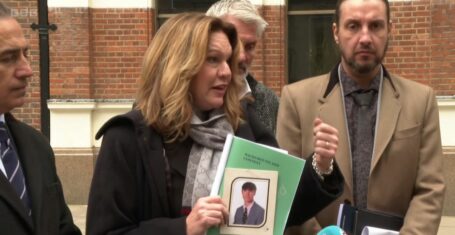
‘Notts Uni Tortures Animals’: Animal Justice Project Protestors take over Ningbo Friendship Bridge
The protest was held as part of the Animal Justice Project
On Thursday 27th February, a protest was organised by the Nottingham Animal Rights group as part of the Animal Justice Project. Activists aimed to raise awareness of animal testing that goes on in Nottingham Uni's science labs.
Supporters of the movement held illuminated letters over QMC's Ningbo Friendship Bridge spelling out: NOTTS UNI TORTURES ANIMALS.
The protest started at 5pm and lasted two hours until 7pm, in order to catch the attention of rush hour traffic. People were honking their car horns and coming up to the protesters to show their support.

We spoke to David Smith, a campaigner for the Nottingham Animal Rights group, who argued that "animals are not ours to use an abuse".
He told The Tab that the treatment of animals in the University of Nottingham's science labs is "fundamentally wrong from an ethical perspective".
Animals are said to have been burnt and had metal put into their bodies, all for student research.
He even went on to comment that Nottingham University is one of the "worst universities in the country for the cruel practise of animal testing".

According to the information leaflet that activists were distributing, "over 25,000 animals are abused inside the University of Nottingham labs each year".
The leaflet goes on to add that "more than 130 experiments [at the University of Nottingham] last year were classified as SEVERE".
When asked what alternative solutions there are to replace animal testing in medical research, David suggested using human tissue cultures and autopsies.

When asked to provide a statement on use of animals in research at the University of Nottingham
, a spokesperson for the University of Nottingham said:
"The University of Nottingham carries out important and world-leading research and respects and recognises the vital role that animals play in helping us to tackle important global health challenges in both human and veterinary medicine. This includes research that has been proven to improve cancer diagnosis and treatment, cardiovascular disease, diabetes, obesity, degenerative neurological disease and serious infection.
"The complexity of human and animal biology can’t always be replicated by alternative methods in the lab but we use as few animals as possible and the University is committed to the principles of the 3Rs – the Reduction, Refinement and Replacement of animals in research. We work closely with organisations including FRAME, which aims to find scientific methods to replace the need for laboratory animals in medical and scientific research, and the National Centre for the 3Rs, which leads the discovery and application of new technologies and approaches to replace, reduce and refine the use of animals for scientific purposes.
"Scientists at Nottingham are actively engaged in the development of alternative methods including computer modelling, tissue culture, cell and molecular biology and research with human subjects, as well as refining experimental techniques and improving experimental design to improve welfare and ensure the highest standards of care.
"All animals undergoing experimental procedures are monitored very closely by an independent team of animal care staff. This includes named veterinary surgeons, named care and welfare officers and trained and dedicated animal technicians. This is in accordance with the Animals Scientific Procedures Act 1986 and meets the strict guidelines set out by the Home Office."

The University wish to emphasise that all information about Nottingham’s use of animals for research is available.
They also state on their Twitter page that:
– "Research involving animals @UniofNottingham has led to proven benefits to #cancer diagnosis and treatment, #cardiovascular disease, #diabetes #obesity and other serious illnesses.
– "Scientists @UniofNottingham are committed to the principles of the 3Rs – the Reduction, Refinement and Replacement of animals in research. We work closely with organisations including @FRAMEcharity"
–
"Scientists @UniofNottingham are involved in refining experimental techniques and improving experimental design to improve welfare and ensure the highest
standards of care."
– "Animals @UniofNottingham are monitored by an independent team of specialists including named vet surgeons, welfare officers and dedicated technicians. This is in accordance with the Animals Scientific Procedures Act 1986 and meets the strict guidelines set out by @UKhomeoffice"

The protest clearly had a profound effect on passers-by, with many pedestrians stopping to chat to campaigners about the project.
What isn't yet clear is whether Nottingham University will take action and change their approach to running medical tests on animals, in response to the protest.









































